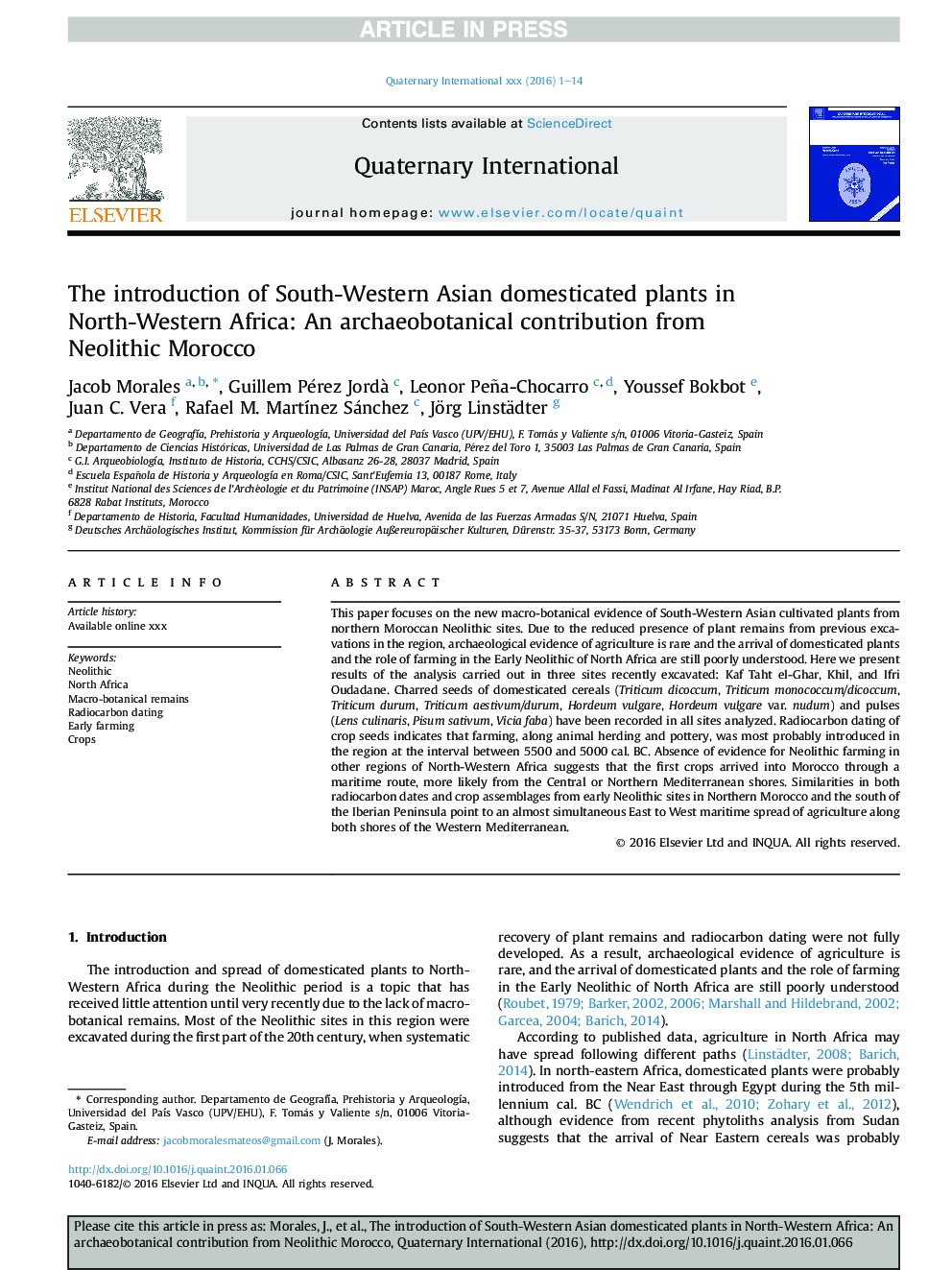| Article ID | Journal | Published Year | Pages | File Type |
|---|---|---|---|---|
| 5114209 | Quaternary International | 2016 | 14 Pages |
Abstract
This paper focuses on the new macro-botanical evidence of South-Western Asian cultivated plants from northern Moroccan Neolithic sites. Due to the reduced presence of plant remains from previous excavations in the region, archaeological evidence of agriculture is rare and the arrival of domesticated plants and the role of farming in the Early Neolithic of North Africa are still poorly understood. Here we present results of the analysis carried out in three sites recently excavated: Kaf Taht el-Ghar, Khil, and Ifri Oudadane. Charred seeds of domesticated cereals (Triticum dicoccum, Triticum monococcum/dicoccum, Triticum durum, Triticum aestivum/durum, Hordeum vulgare, Hordeum vulgare var. nudum) and pulses (Lens culinaris, Pisum sativum, Vicia faba) have been recorded in all sites analyzed. Radiocarbon dating of crop seeds indicates that farming, along animal herding and pottery, was most probably introduced in the region at the interval between 5500 and 5000Â cal. BC. Absence of evidence for Neolithic farming in other regions of North-Western Africa suggests that the first crops arrived into Morocco through a maritime route, more likely from the Central or Northern Mediterranean shores. Similarities in both radiocarbon dates and crop assemblages from early Neolithic sites in Northern Morocco and the south of the Iberian Peninsula point to an almost simultaneous East to West maritime spread of agriculture along both shores of the Western Mediterranean.
Related Topics
Physical Sciences and Engineering
Earth and Planetary Sciences
Geology
Authors
Jacob Morales, Guillem Pérez Jordà , Leonor Peña-Chocarro, Youssef Bokbot, Juan C. Vera, Rafael M. MartÃnez Sánchez, Jörg Linstädter,
